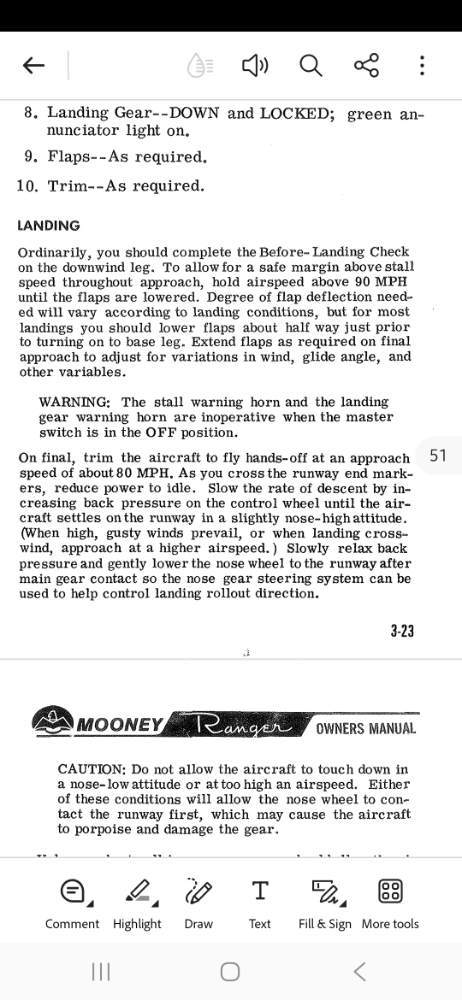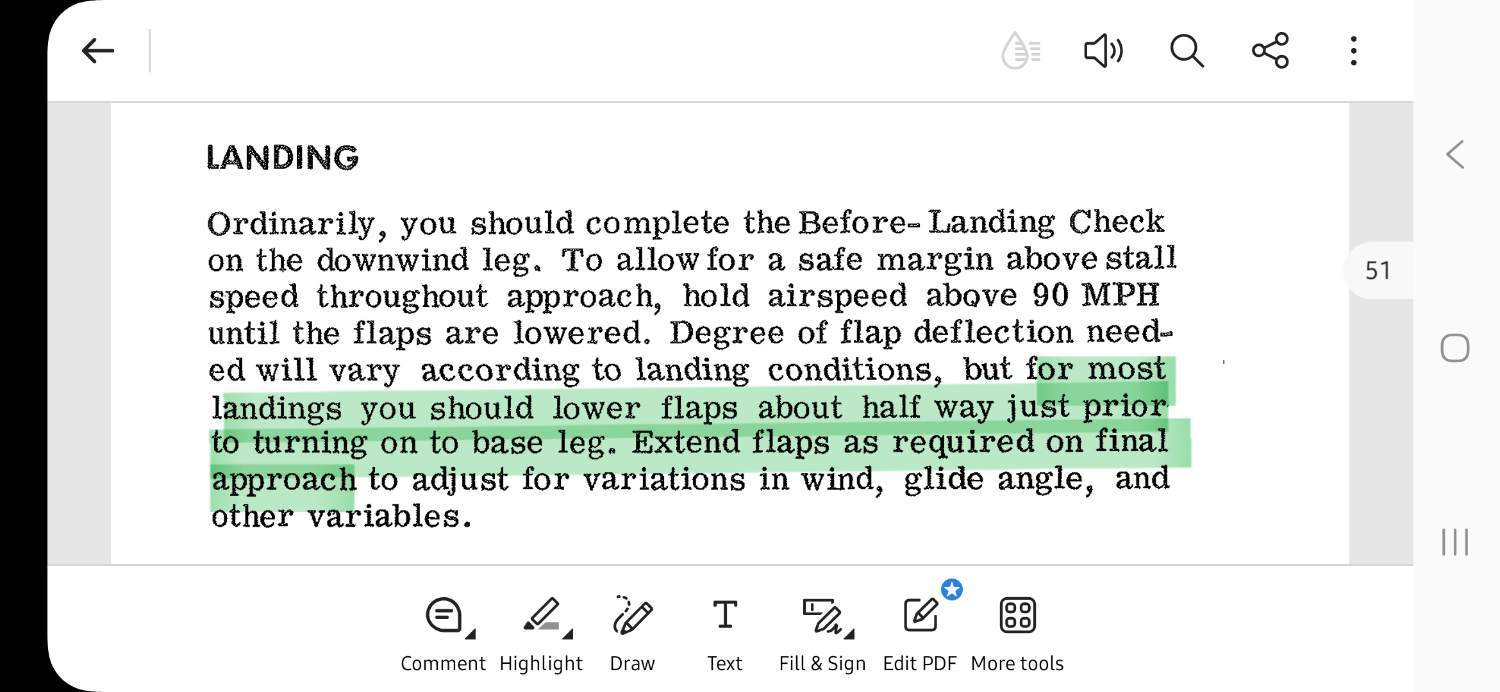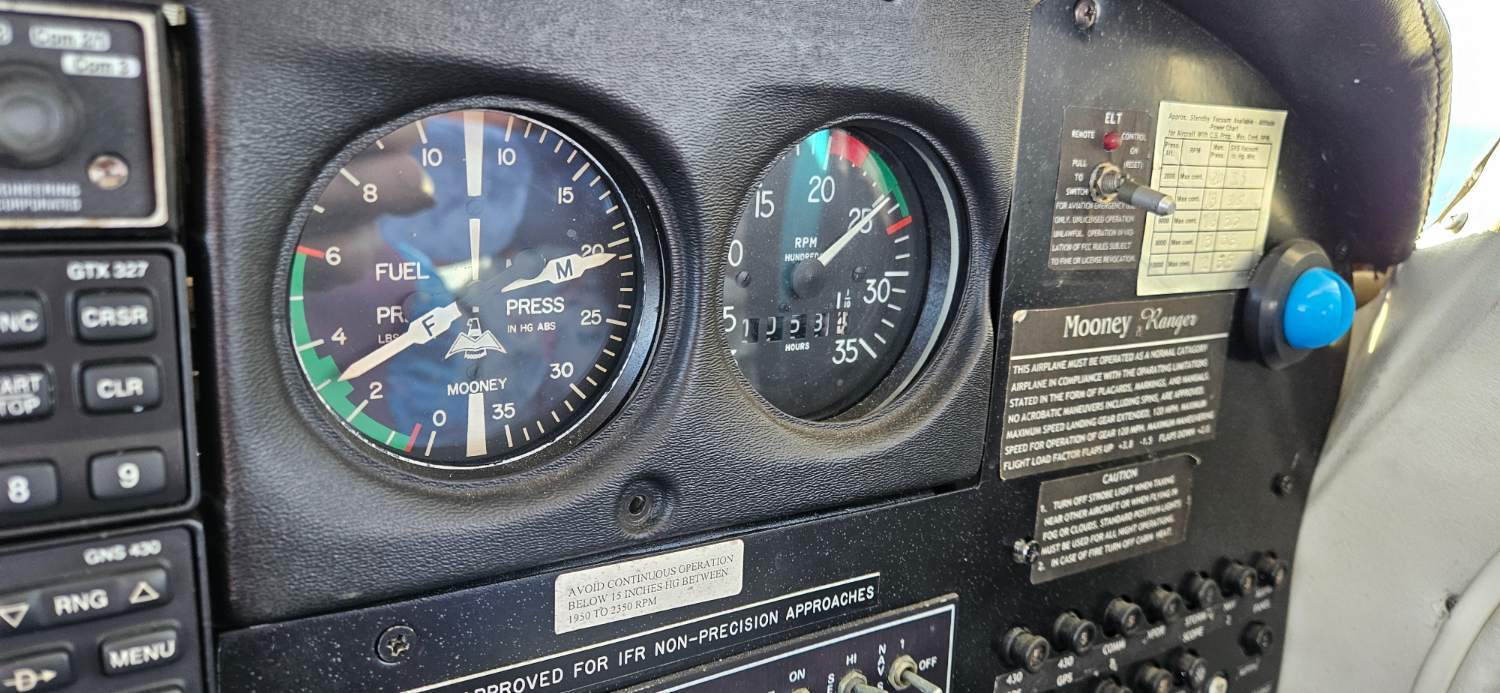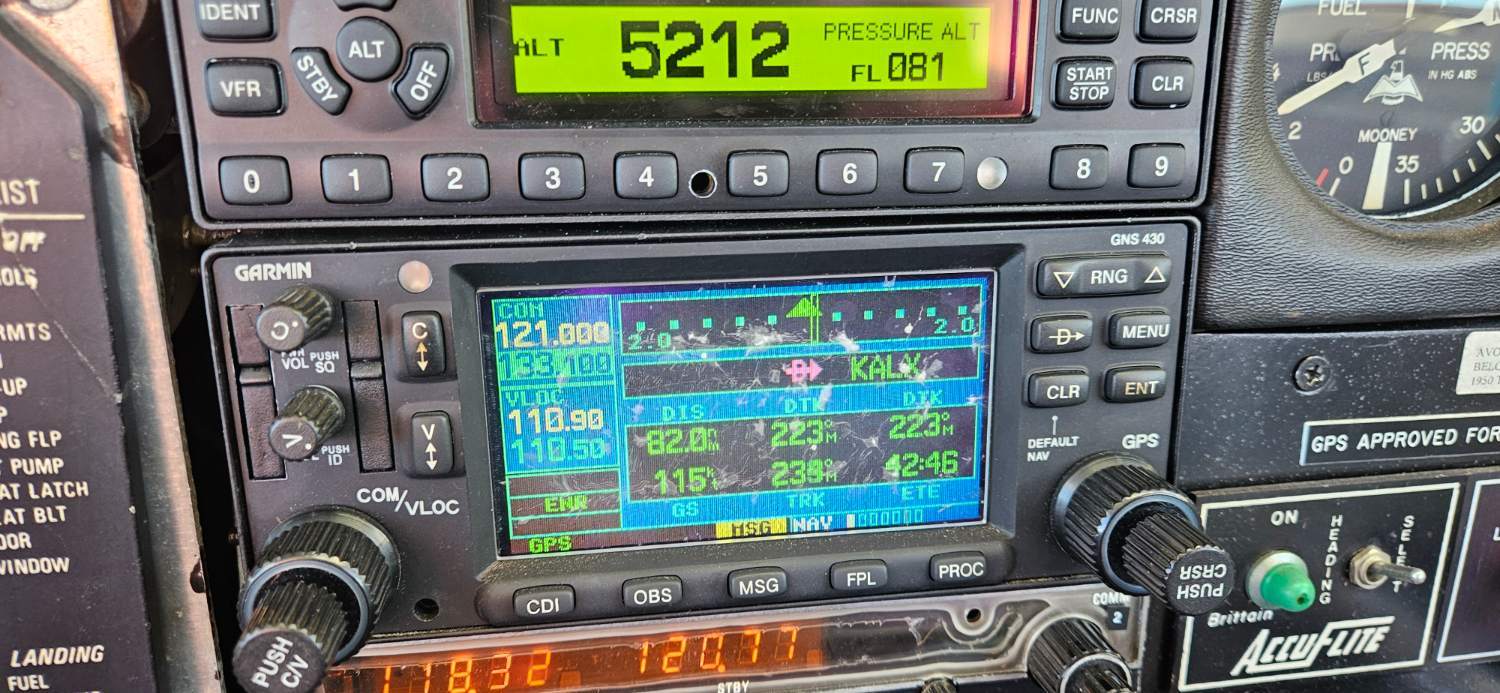-
Posts
20,187 -
Joined
-
Last visited
-
Days Won
125
Content Type
Profiles
Forums
Blogs
Gallery
Downloads
Events
Store
Everything posted by Hank
-

2 engines still making same mistakes
Hank replied to 201er's topic in Mooney Safety & Accident Discussion
The airplane stopped sideways, tail high, resting on the concrete barrier down the middle. What grassy median did you see??? -
@Scott Dennstaedt, PhD teaches about weather and skew T diagrams. He may be able to point you at some good information.
-

2 engines still making same mistakes
Hank replied to 201er's topic in Mooney Safety & Accident Discussion
One engine only bent the single blade pointing at the ground (left side?) backwards, while all three blades on the other side bent backwards. In gear up landings with power, the blade tips bend forward. So dual engine failure. No mention was made of fuel, only that the plane went down after about an hour's worth of local area flying. -
They didn't on mine, either. And stopping position has varied occasionally as described above since I bought her in 2007 . . . The prop was balanced prior to my purchase, and I had it checked (still 0.01) several years ago.
-
There is some variation where my prop stops. It's a 3-blade, and to use the tow bar, I need 2 blades down and one up, but occasionally it stops with one down, right in front of the nose gear leg.
-

How many people lost an Alternator/Voltage Regulator in flight?
Hank replied to Yetti's topic in General Mooney Talk
My wife won't let me replace her 2011 Altima with > 230K miles, and my 2017 Altima is going strong at 173K. That's what 45-miles-each-way commutes does . . . -

Mustang geared up, and many more...
Hank replied to philiplane's topic in Mooney Safety & Accident Discussion
And we are all better for both groups! -
On a hurricane relief relief flight, I was going to RDU to load up in the morning, with a lot of other people. I was vecfored 20 nm north, still at 7500 msl, before being turned back toward the field and "cleared to land, number 8." Whatever, it worked. Although descending 7000 feet on a 20 nm final approach leg was a bit unusual . . .
-
I've used a case and a half of oil, my roll of wrenches and about 5-6 printed approach plates books, then had to push down with one arm. My old IA had a galvanized wash tub on wheels, filled with cement with a eyelet poking up out of it; he used it for many things, including holding the nose down when removing the engine from a plane (not mine). This does require planning and preparation, installing wheels and wiring up the eyelet before mixing the cement.
-
Me too. Where i live gets warm in the summer, but we have humidity, dirt, plants and trees. If i never see another snowflake, it will be too soon!
-

Making sense of NTSB report for M20F N9339M
Hank replied to DXB's topic in Mooney Safety & Accident Discussion
I usually make the midfield turnoff at home (5400'; the turnoff is significantly off-center towards 18, which is downhill). But I never brake hard unless necessary, and when landing uphill on 36 I don't brake at all. Whether I make the turnoff on 18 is generally determined by whether I'm high or fast, which makes me land long, but because there's more room on 36 (plus being uphill), it's almost never an issue that way. I rarely use full flaps, but tend to use more as windspeed decreases to get the descent angle I'm used to. -

How many people lost an Alternator/Voltage Regulator in flight?
Hank replied to Yetti's topic in General Mooney Talk
I was flying IFR this summer, fat and happy at 6000' over East Tenn. and talking to Memphis Center. Came time to descend, I tried to ask and my G430W reset itself when I hit the PTT to ask for lower. It eventually finished and I heard chatter, so I tried again with the same results. So I tried Comm 2, a King unit, and it reset itself to 120.0. So I set 7600 in the transponder and descended anyway, way late by now requiring me to orbit my destination ti reach pattern altitude. Flaps went down slowly, gear had to be hand-cranked, 52 turns down below my left knee. Guys ran out of the FBO when I stopped, and the local police were sad to not help with a dramatic rescue. It was just a broken field wire. The rental car home from my ~90-minute flight cost 3X my repair bill. If you've never done anything to your alternator, and don't see anything in the logbook, check it soon. -

Making sense of NTSB report for M20F N9339M
Hank replied to DXB's topic in Mooney Safety & Accident Discussion
Welcome to the Partial Flap Club!! Read the Manual, see what it says; mine has both paragraph discussion abs checklists. I have Flaps--to Takeoff at pattern entry, and leave them there until I'm on final, and as quoted from my Manual above, set them as needed. Here's a wordy description: Have fun with the C! -

Making sense of NTSB report for M20F N9339M
Hank replied to DXB's topic in Mooney Safety & Accident Discussion
I've never been to a field where that was important; the shortest I've ever landed at is a 2000' grass strip, exact landing distance just didn't matter. I've been based at a 3000' paved strip for 7 years and 3200' for 3 years; a MAPA PPP took me to one 2400 x 40. The difference between Takeoff Flaps and Full Flaps just doesn't matter. But the handful of landings I made in an F were better when I used Full Flaps, the midbody handles surprisingly different from my short body at low airspeeds. -

Making sense of NTSB report for M20F N9339M
Hank replied to DXB's topic in Mooney Safety & Accident Discussion
Looks to me like it does. My Owners Manual says "Extend flaps as required on final approach". On the checklist section, it says "9. Flaps--As required". Thus is not "Flaps--DOWN" no matter how you look at it. And yes, I'm aware that your POH is probably different, but my Owners Manual preceeded your POH by a bunch of years. -

Making sense of NTSB report for M20F N9339M
Hank replied to DXB's topic in Mooney Safety & Accident Discussion
-

Can surefly and e-mag both be on one engine without backup battery?
Hank replied to Will.iam's topic in General Mooney Talk
I'd be careful with that. I've had two total electrical failures in flight (2010, 2025), and in neither of them was i worried about finding a place to land. The first one was just below the clouds, crossing the VOR inbound ~1000agl over the WV hills, nowhere to land but the airport 8 miles or so away. Not a place to lose ignition . . . . -
The worst crabbing I've done had me looking out the passenger front window in cruise. The worst crosswind I've landed in is the one just above. No weather reporting there, but the forecast 18nm away was 7-10 knots. As I was tying down, the windsock was straight out, but the wind was more than the 15 knots I've been told that indicates.
-
Because then they can't advertise "fully digital autopilot" . . . And it would require planes to keep the vacuum pump that many remove when installing the TV screen instrument panel.
-

Aspen MFD with EI CGR engine monitor
Hank replied to Steve Dawson's topic in Engine Monitor Discussion
I'm glad to know that the only "feelings" you give any weight to are your own strong pro-Garmin feelings! Down the road, if they ever get off their duff and approve their autopilot for Vintage Mooneys, I plan to install a Dynon SkyView in my C. But then I'm hardly a new owner, she's been mine for 18-1/2 years, and the Brittain gear is holding on by the skin of its teeth. C'mon Dynon AP! And yes, I did speak to a Garmin sales rep, their full glass panel with AP costs approximately the value of my Mooney, plus install, or roughly 3X Dynon . . . No "feeling" is worth that! YMMV. -
Yeah, I paid the price for Wednesday's tailwinds this afternoon. Quartering tailwinds were forecast for today, but what you get is what you get. Approx. 1:40 outward for 298 miles, but 2:06 for 269 miles back VFR (due to IFR routing way around Atlanta Bravo outbound).
-
The alternative is to drop an airplane-sized actual firebomb with very flammable, even explosive fuel, onto whatever is below, with at least one body inside. So yes, I'm fine with pushing flaming handheld electronics out the window.
-
When I lived in WV, I bought a cell switch, and would plug the Reiff into it after every winter flight. Depending on the severity of the cold, I would either call it the night before or when I woke up the morning of a flight. Now in Sweet Home, I do not find this necessary, but will sometimes plug in the heater as soon as I get to the airport, and allow it to heat for an hour or so. This lets me preflight, load baggage and check weather, enjoy my coffee and make a pitstop before unplugging and pulling the plane out of the hangar.
-
@takair should be in this conversation
-
She's a trooper! The fun part was directional control after touchdown, as the rudder lost effectiveness in the much-stronger-than-forecast crosswind. The tractor made me say bad things and float a bit then bounce, but I was still stopped in about 2000' to taxi in for parking. She will still fly home with me . . . I just enjoy the flying, she enjoys the quick transportation. This time, we both enjoyed not having to drive across Atlanta on the two busiest travel days of the year, Thanksgiving Wednesday and Sunday.








